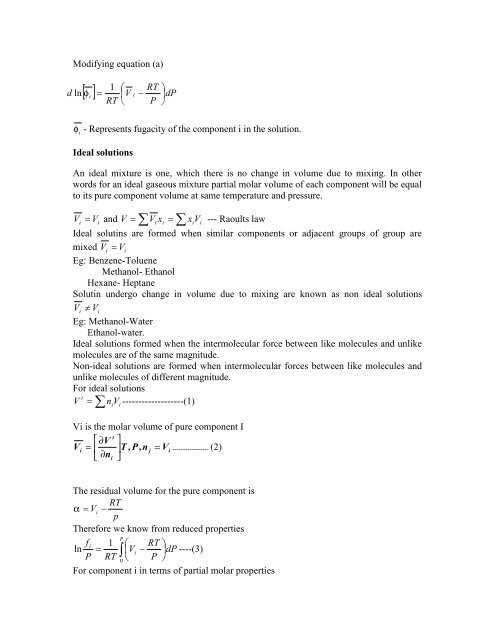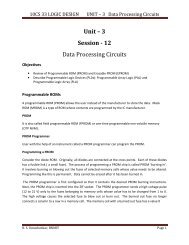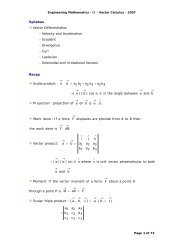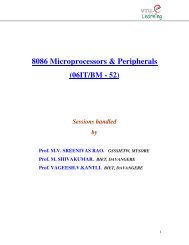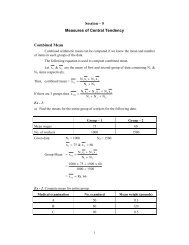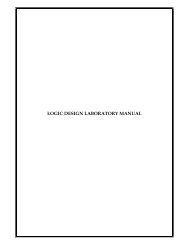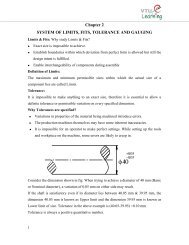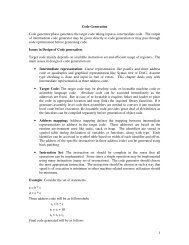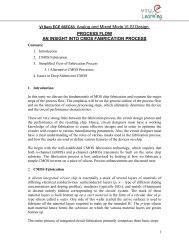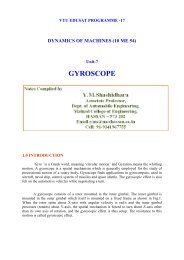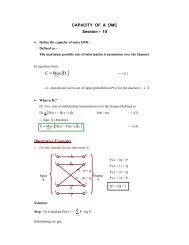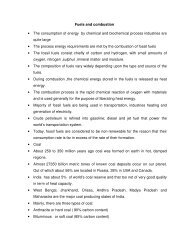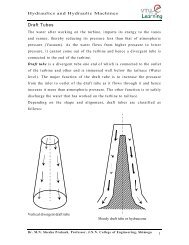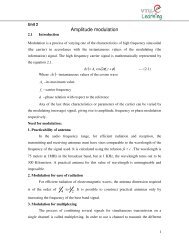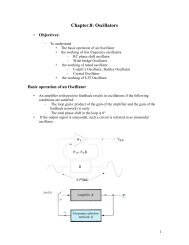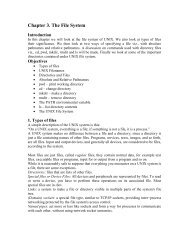Fugacity: It is derived from Latin, expressed as fleetness or escaping ...
Fugacity: It is derived from Latin, expressed as fleetness or escaping ...
Fugacity: It is derived from Latin, expressed as fleetness or escaping ...
You also want an ePaper? Increase the reach of your titles
YUMPU automatically turns print PDFs into web optimized ePapers that Google loves.
Modifying equation (a)<br />
RT <br />
V<br />
dP<br />
1<br />
d ln i<br />
i<br />
RT <br />
i - Represents fugacity of the component i in the solution.<br />
Ideal solutions<br />
An ideal mixture <strong>is</strong> one, which there <strong>is</strong> no change in volume due to mixing. In other<br />
w<strong>or</strong>ds f<strong>or</strong> an ideal g<strong>as</strong>eous mixture partial molar volume of each component will be equal<br />
to its pure component volume at same temperature and pressure.<br />
i i V V and Vi xi<br />
xiVi<br />
P<br />
V --- Raoults law<br />
Ideal solutins are f<strong>or</strong>med when similar components <strong>or</strong> adjacent groups of group are<br />
mixed i i V V <br />
Eg: Benzene-Toluene<br />
Methanol- Ethanol<br />
Hexane- Heptane<br />
Solutin undergo change in volume due to mixing are known <strong>as</strong> non ideal solutions<br />
i i V V <br />
Eg: Methanol-Water<br />
Ethanol-water.<br />
Ideal solutions f<strong>or</strong>med when the intermolecular f<strong>or</strong>ce between like molecules and unlike<br />
molecules are of the same magnitude.<br />
Non-ideal solutions are f<strong>or</strong>med when intermolecular f<strong>or</strong>ces between like molecules and<br />
unlike molecules of different magnitude.<br />
F<strong>or</strong> ideal solutions<br />
t<br />
V niVi<br />
-------------------(1)<br />
Vi <strong>is</strong> the molar volume of pure component I<br />
t V<br />
<br />
Vi T<br />
, P , n j Vi<br />
----------------- (2)<br />
ni<br />
<br />
<br />
The residual volume f<strong>or</strong> the pure component <strong>is</strong><br />
RT<br />
Vi <br />
p<br />
Theref<strong>or</strong>e we know <strong>from</strong> reduced properties<br />
P<br />
f i 1 RT <br />
ln Vi<br />
dP ----(3)<br />
P RT P<br />
0 <br />
F<strong>or</strong> component i in terms of partial molar properties


